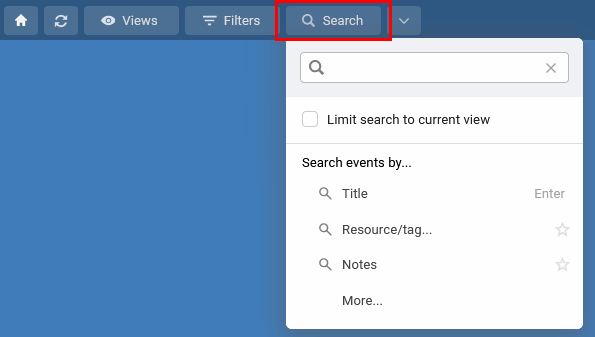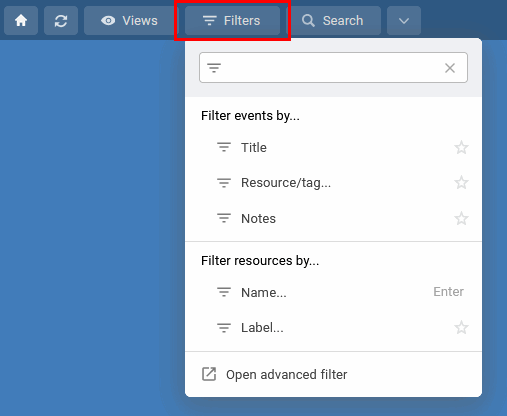Searching and Filtering Your Schedule
Search and Filter are powerful tools to help you manage your schedule view, but they work differently:
Search helps you find specific items anywhere. Filter helps you narrow your current view to focus on a subset.
Purpose: To find something specific when you know what you're looking for. How it Works: Search looks through all information in the schedule, regardless of the view you're currently on or any filters you've applied. Results: Search results appear in a separate list or popup. This means your current schedule view remains unchanged, allowing you to easily view or edit results without losing your place. How to Use: Click the Search icon, enter keywords (like a name, shift type, or location), and choose which field to search within.


Purpose: To reduce clutter and focus on a specific group of items. How it Works: Filters start with the view you are currently seeing. It then hides any events or resources that do not meet the rules you define in the filter settings. Results: Your main schedule view is updated immediately to show only the items that pass the filter. How to Use: Click the Filters icon, enter keywords for the criteria you want to use (like Name, Skill, Location, Event Type, Status), and select the value you want to see. Or open the Advanced Filter to set multiple criteria and values.

Search
Use Search to quickly locate specific events within your entire schedule database.

Filter
Use Filters to refine your current schedule view, displaying only the events and resources that match criteria you set.
Last updated, 29 April 2025, 10:18
Still need help? Contact Us
Join Us - Live Webinar
...
Close
Help Topics
Search
Contact Us